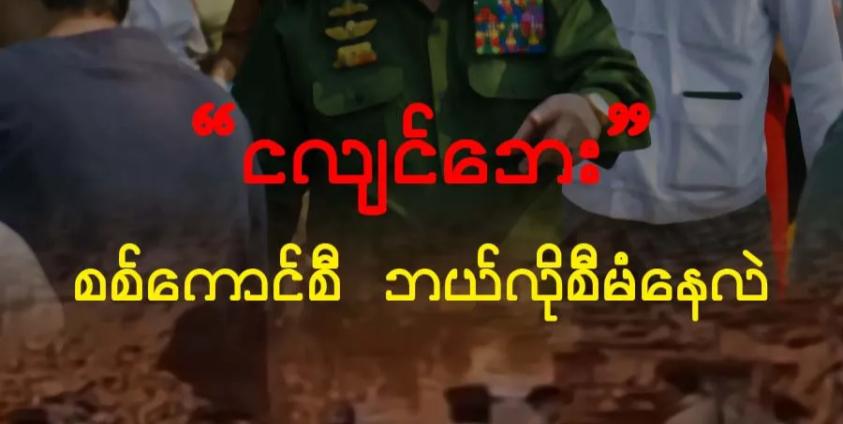Nowhere hit by the 28 March 2025 earthquake with its epicentre in central Myanmar has received any help or assistance from the junta in the 10 days since the earthquake.
The earthquake caused widespread destruction and loss of life across at least six regions, including major cities such as Mandalay, Sagaing, and Naypyidaw, as well as southern Shan State.
Areas hit by the earthquake received no assistance from the junta, neither in the immediate aftermath of the quake, nor later. More than a week after the quake the junta has yet to demonstrate that it has any effective approaches to managing relief efforts.
Instead of actively participating in the rescue efforts, the junta deployed armed troops to the earthquake-stricken areas, claiming that they were being deployed to strengthen security, according to witnesses. All the armed troops have done is patrol, they have not helped out and assisted the victims of the earthquake in any way.
A woman helping the earthquake victims, said to IMNA: “The junta's Central Region Military Command is based in Mandalay City, [within the ancient palace compound] and the worst-hit areas of the city are actually close to the command. The soldiers from the command headquarters can easily reach the disaster zones by simply going outside the moat [surrounding the palace compound], yet since the earthquake, they haven't even provided a single bottle of water to the affected locals. When rescue teams arrived in Mandalay, the soldiers drew their guns and emerged from the command, claiming they were there to provide security. But what the people really need right now isn't security—no one is coming to attack us.”
The coup leader, Senior General Min Aung Hlaing, visited Mandalay City on 29 March, the day after the earthquake, to assess the damage, but took no action to initiate effective relief efforts.
Sagaing City was under the earthquake’s epicentre. Like Mandalay, it is under junta control and suffered significant damage and loss of life from the earthquake. Yet, it also also has not received any assistance from the junta.
In the Naypyidaw Union Territory, where the junta capital, Naypyidaw City and its administration are located, junta officials led by Min Aung Hlaing briefly visited damaged areas of Pyinmana Town, in Pyinmana Township, took photographs, and then left, according to government employees affected by the earthquake.
A government employee from Zabuthiri, another township in Naypyidaw Union Territory, said: “There’s only been one rescue team that has come here since the day after the earthquake. You can see guys with guns standing here and there, but they’re not helping with any relief work. Ministers from different ministries come one after another, asking the people affected by the earthquake how they’re doing. Then they just take a few photos and leave. Some bodies still haven’t even been retrieved from the ruins.”
The junta-controlled Myawaddy news agency broadcast footage of the generals, led by Min Aung Hlaing, surveying the collapsed pagodas in Naypyidaw Union Territory as if it was an urgent priority, even though many bodies had still not been recovered from the rubble.
The junta’s responsiveness to natural disaster has also been further weakened because it has funnelled state funds into military spending rather than putting them aside for emergency disaster relief.
The previous Myanmar National League for Democracy (NLD) civilian government had saved money in a disaster relief fund and had stockpiled international aid in case of a natural disaster emergency.
After illegally seizing power in the February 2021 coup, not only did the junta fail to set up its own disaster relief fund, it also emptied out the disaster relief fund set up by the NLD by loaning the money out to stimulate agricultural development and support small and medium enterprises.
A political analyst said to IMNA: “We’ve seen how the junta [Myanmar Army] handles major disasters before. Look at Cyclone Nargis in 2008, or more recently, Cyclone Mocha in 2023 and the flash floods in 2024. How much help did the Myanmar people actually get from the junta during those disasters? During Nargis, only 1 per cent of the international aid actually reached the people. These are all very clear examples. The international community needs to pay attention to these incidents. Right now, in the earthquake-affected areas, food packages are being distributed without the involvement of soldiers or police. It’s all about people helping each other.”
There are concerns that funds donated for earthquake relief are not reaching those who truly need them. As of 6 April the junta had received $136.88 million in aid from 23 international governments and organisations, according to media outlet DVB.








